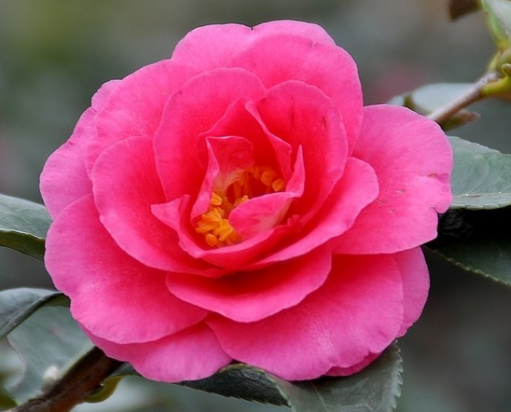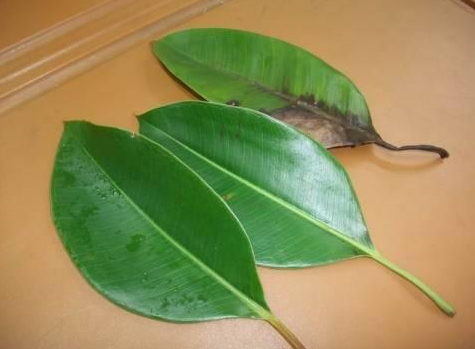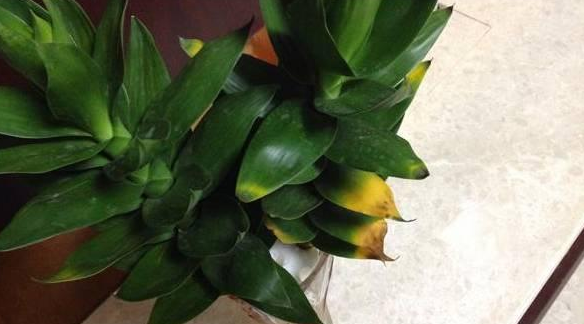What if the camellias lose their leaves? is it suitable to grow indoors?
Camellia, which is the one in bloom of tea, feels a little sad when I hear it, because there is a novel called Camellia Girl. This is a tragedy. Let's see what to do when camellias lose their leaves. Are camellias suitable for growing indoors:

What if the camellias lose their leaves:
First, the basin soil is too dry or too wet. Make sure the potted soil is moist when planting scented tea seedlings. Camellias like to grow in a warm and humid environment. Water should be fully watered when planting, usually once a day in spring and autumn, and once in the morning and evening in summer. When it is too hot in summer, you should cool the flowerpot and sprinkle water around the flowerpot. Water the flowers in the sun for a while, or add some ferrous sulfate to the water.
If it is not watered enough during the growing period, it will cause the leaves to fall off. When growing camellias, you should choose a moist, fertile, breathable, acidic soil. If the soil is stagnant and too wet, it will lead to poor root breathing and affect the growth of camellias, so it is necessary to do a good job of drainage on rainy days. When watering camellias, they are watered according to the growing period. The soil is usually moist, but more water is needed during the growing period. Should ensure more than five hours of light every day, in summer to do a good shade measures, it is best to put in a semi-shaded place for breeding.
Second, fertilization. Phosphate fertilizer should be applied once or twice during bud pregnancy to ensure the quality of flowering in the later stage. After the flowers fade, nitrogen fertilizer should be applied once a week, a total of one or two times, mainly to promote the growth of branches and leaves. When fertilizing, the concentration should be controlled, and raw fertilizer should not be used.
Third, insect pests. If the leaves of camellias grow densely, cut off the leaves that are too dense to ensure that the camellias are transparent and ventilated, so as to avoid pests such as red spiders and cause leaves to fall. After the occurrence of insect pests, can be treated with soap and water brush leaves.
Are camellias suitable for growing indoors:
Camellias can be raised indoors, but it should be noted that camellias prefer sunshine and ventilation, and they are easy to die if they are not noticed indoors.
This is the end of the way to deal with the loss of leaves of camellias. If you want to raise camellias indoors, you should take them out to bask in the sun.
Are camellias poisonous? are camellias suitable for indoor cultivation / non-toxic indoor cultivation has many advantages
Camellia, a very beautiful ornamental flower, if you know about it, we should know that the color of camellia is very bright. In life, there is a saying that the more gorgeous things are, the more poisonous they are. From this, there are rumors that camellias are poisonous. Are camellias poisonous? Are camellias suitable for growing indoors? In this regard, it is up to the editor to solve everyone's doubts.
Are camellias poisonous? there are two situations.
In life, as one of the top ten famous flowers in China, the beauty of camellias is admired, but some people wonder whether camellias are poisonous. In this regard, the editor found two results: one is that the camellias are poisonous, and the other is that the camellias are poisonous, as follows:
1. Camellia is non-toxic.
Before growing camellias, some people said it was poisonous! In fact, camellia is not poisonous, some people just confuse it with another plant. Therefore, keep camellias at home, do not worry about the harm. Not only non-toxic, there are many efficacy and effects of camellia, as a medicine, it can also help to treat many diseases.
2. Camellia is poisonous
There are many varieties of camellias, ordinary camellias are non-toxic, but there is another kind of camellias called Manjiluo, which is extremely toxic. It is understood that the seeds, fruits, leaves and flowers of Manjiro are all poisonous, and the seeds are the most toxic. Children can be poisoned after eating 3-8 seeds by mistake, with serious consequences.
Is camellia suitable for growing indoors?
Generally speaking, the camellias we usually raise are non-toxic, plus the camellias have a long flowering period and smell good. So is camellia suitable for growing indoors? it is obviously suitable, not only for camellia, but also for many advantages of indoor camellia.
Advantages of raising Camellia indoors
1. Strong ornamental
Camellias always bloom quietly when the weather is cooler in late autumn, so they are very suitable for planting at home for owners to enjoy. Keep the camellias at home, and after it blossoms, its colorful flowers and refreshing scent make people relaxed and happy. It is a great blessing in life to have such beautiful scenery at home.
2. Purify the air
Camellia has a strong ability to absorb carbon dioxide, and has a strong resistance to harmful gases such as hydrogen sulfide, chlorine, hydrogen fluoride and smoke in the air, purifying the air. So a beautiful environment and purifying the air is also one of the advantages of raising camellia indoors.
3. The fengshui effect of camellias
In addition to the above two points, the benefits of indoor mountain tea are also reflected in fengshui. Raise camellias at home, whenever winter comes, when people are lazy, when they see such vibrant camellias, they will re-inject vitality into themselves and strive to make progress.
In addition, putting a pot of camellias on the balcony can not only beautify the home environment, purify the air, but also improve home fengshui. Because the balcony is more empty and the sunshine is more sufficient, it is very suitable for planting camellias. And the cultivation of camellias on the balcony also has the effect of invigorating wealth.
Generally speaking, camellias are very beautiful, and it is not difficult to raise them. More importantly, our common camellias are not poisonous, so excited friends can make a pot to raise them. If you don't know how to raise them, you can also take a look at the cultivation methods of camellias. As to whether the camellias are poisonous or not, the editor has introduced them here, hoping to give you some help. Finally, may everyone's camellias blossom beautifully.
What if the camellias keep losing their leaves? how to fix it?
Friends who like flowers and plants must know that camellias, it is not so easy to raise camellias, some camellias are easy to fall leaves, camellias fall leaves first to find out the reason, then camellias have been losing leaves how to do?
What if the camellias keep losing their leaves:
The defoliation after flowering may be caused by the drying of the potted soil. Because the plants after flowering have to shoot and sprout and enter the growth period, if the watering is insufficient or impermeable, it is easy to cause the leaves to fall off. Potted camellias should be planted in acid soil with loose, fertile and good drainage, and alkaline soil should be avoided. The size of the flowerpot should be in proportion to the seedlings.
Daily maintenance should be placed in a moist and ventilated half-yin and half-sun place. You need more than 5 hours of light. The amount of water also varies with growth and season. You can keep it moist at ordinary times, and you can be slightly wet during the growing period. In hot summer, the basin soil is dry and wet, and it is irrigated once in the morning and evening. Never pour cold water in the hot sun.
The camellias should be applied nitrogen-based fertilizer 1 to 2 times in time, about once a week, in order to promote the growth of branches and leaves. Phosphorus-based fertilizer was applied 1 to 2 times during bud rearing period, once every 10 days.
Camellia is most vulnerable to shell insects and red spiders. This is due to excessive overlap of blades and poor ventilation. The preventive measure is to remove the overdense branches and leaves to make them ventilated and ventilated. The existing pests can be brushed off with a small toothbrush dipped in soap powder.
The reason why camellias keep losing their leaves:
First, stagnant water and rotten roots lead to camellias falling leaves.
Some camellias bought for a short time, watering is also very diligent, because the basin is large, the root soil is too wet for a long time, it will suffocate the roots, resulting in rotten camellias roots, so fallen leaves.
Anthrax
The disease occurs in the leaves of camellia, mainly in adult or old leaves. The disease spot is nearly round or irregular, showing a water stain-like dark green, and finally becomes yellowish brown or reddish brown. There are tiny black dots on the disease spot. The size of the disease spot varies, and some can be expanded to more than 1 inch of the leaf, with a yellow-brown bulge line on the edge, and a clear boundary with the sound part.
1. Remove the litter and eliminate the source of infection.
2. Strengthen the cultivation management and increase the application of organic fertilizer. Weeding diligently and reasonable irrigation can enhance the disease resistance of the plant.
3. In the early stage of the disease, the same amount of Bordeaux solution, 65% Dyson zinc 600 times 800 times, or 1000 times methyl topiramate was sprayed every half a month for 3 times.
Third, poor ventilation
Some camellias leaves are caused by poor ventilation, especially in winter, long-term indoor, poor ventilation, dirty air or room temperature more than 20 ℃, will also cause buds and leaves.
- Prev

How do rubber trees propagate with leaves what is the cutting temperature?
When it comes to this rubber tree, many people like farming very much. This rubber tree is super green and good-looking. Let's see how rubber trees reproduce with their leaves.
- Next

What if the leaves of Guanyin bamboo turn yellow in hydroponics? can it be saved?
When it comes to this Guanyin bamboo, many people like farming and grow greenly. It is so charming. Let's take a look at how the leaves of hydroponic Guanyin bamboo turn yellow.
Related
- Fuxing push coffee new agricultural production and marketing class: lack of small-scale processing plants
- Jujube rice field leisure farm deep ploughing Yilan for five years to create a space for organic food and play
- Nongyu Farm-A trial of organic papaya for brave women with advanced technology
- Four points for attention in the prevention and control of diseases and insect pests of edible fungi
- How to add nutrient solution to Edible Fungi
- Is there any good way to control edible fungus mites?
- Open Inoculation Technology of Edible Fungi
- Is there any clever way to use fertilizer for edible fungus in winter?
- What agents are used to kill the pathogens of edible fungi in the mushroom shed?
- Rapid drying of Edible Fungi

